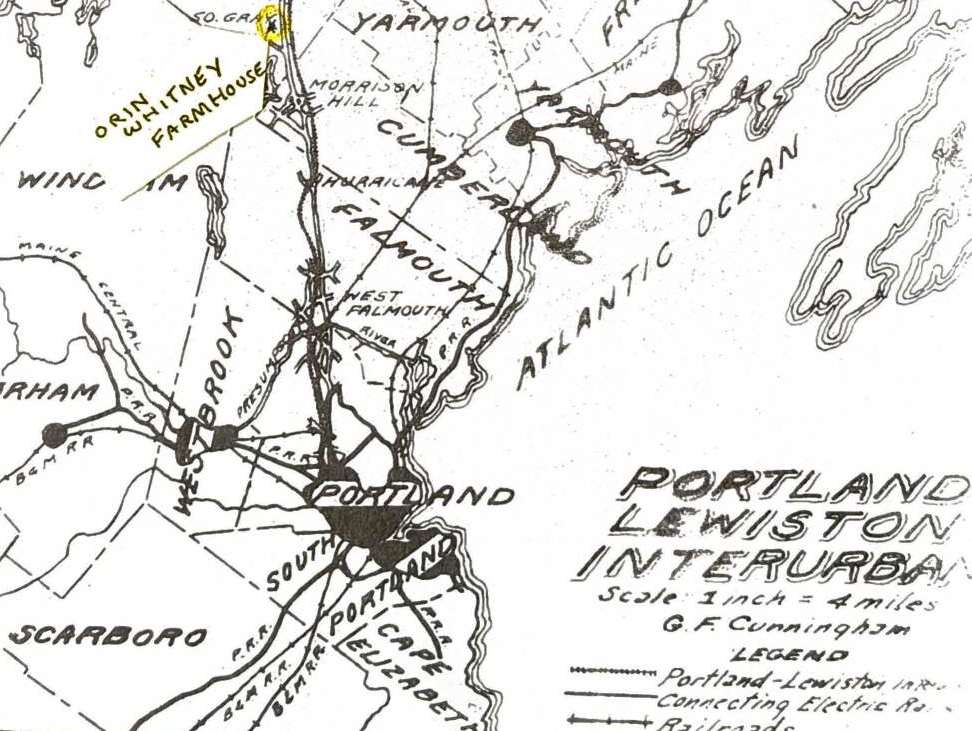We had a pasture on each side of the tracks in south Gray. This meant that every time we crossed the tracks with the horse and wagon we had to get off and open and shut the gates. which was very inconvenient. We had to do the same to move the cows to another
pasture.
I remember the men who worked on the tracks resting in the shade of the old oak trees in back of the barn. When they heard a car coming, they would grab their shovels and run to stand by the tracks until it went by.
I rode to school on the Interurban for several years, and we were issued ticket books by
the town. We took the train at Long Hill and in the winter it was very cold waiting in the little station.
One summer day I was out back of the barn and heard a crash. As a car had just gone by I
knew it had hit something. I ran the half mile to the station, and discovered that it was Dr. Andrews, who had been killed. He had been driving his Model T Ford back from attending a patient. The Interurban car was half a mile up the tracks before they could stop it. I believe that it was Dr. Andrews who delivered me (at home) in 1916.
When the railroad stopped running (in 1933) the rails were pulled up and shipped to Japan. I bought back the right-of-way for the tracks from Central Maine rower Company for $1. It was my grandfather Orin Whitney who, in the beginning, had given the railroad the right-of-way, which went for several miles through the Whitney farm.
Orin C. Whitney

